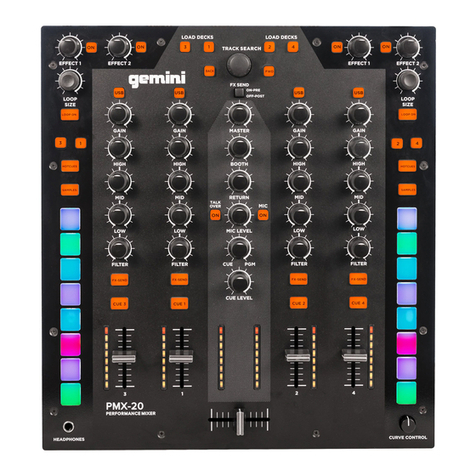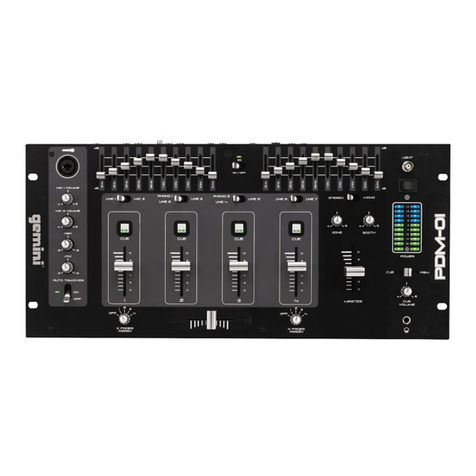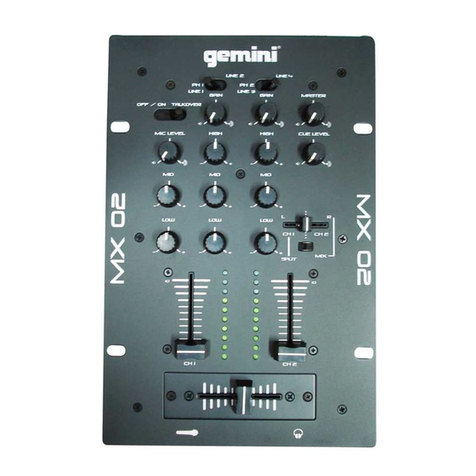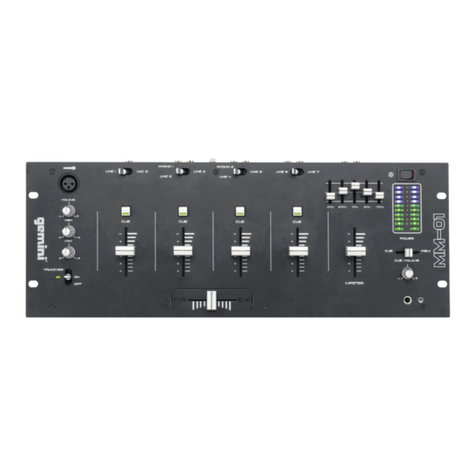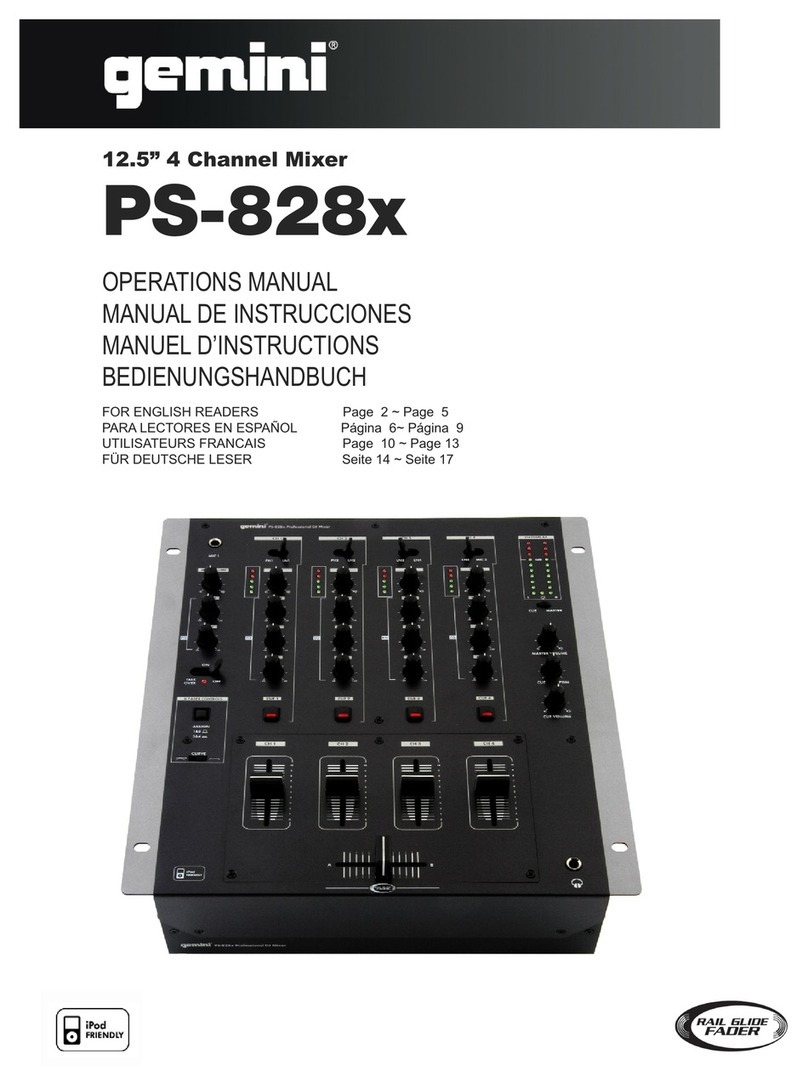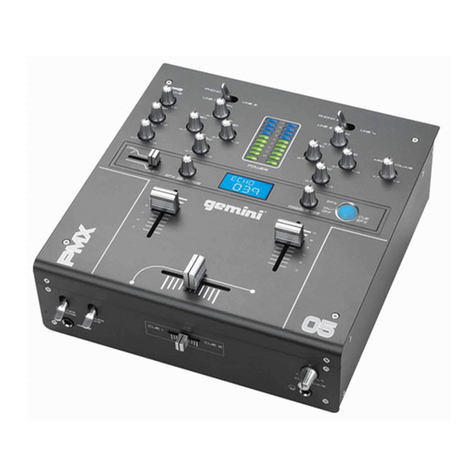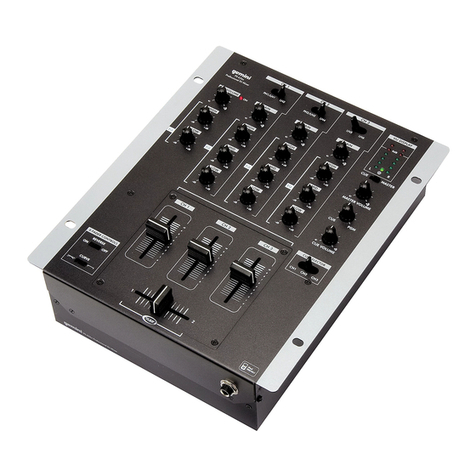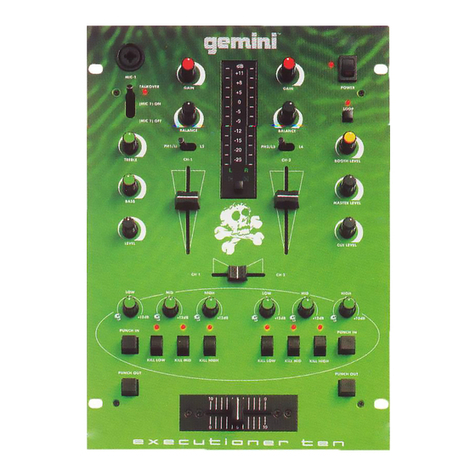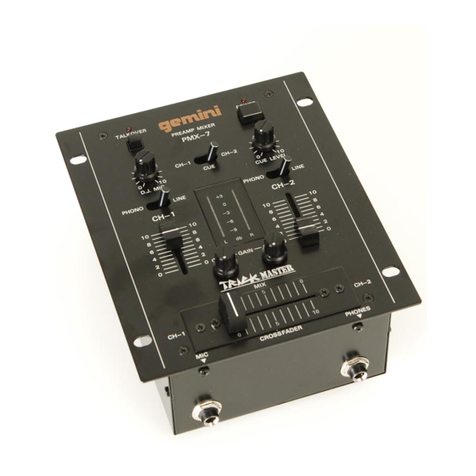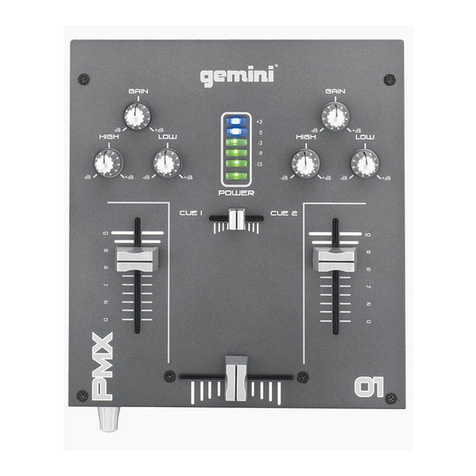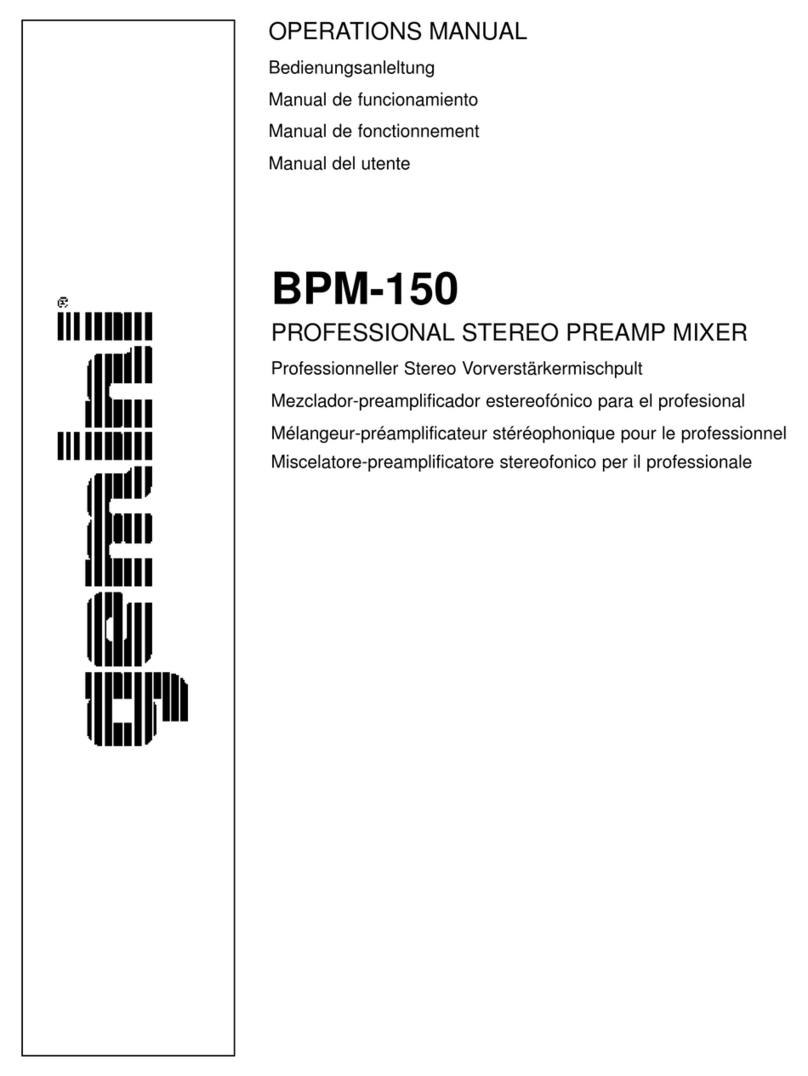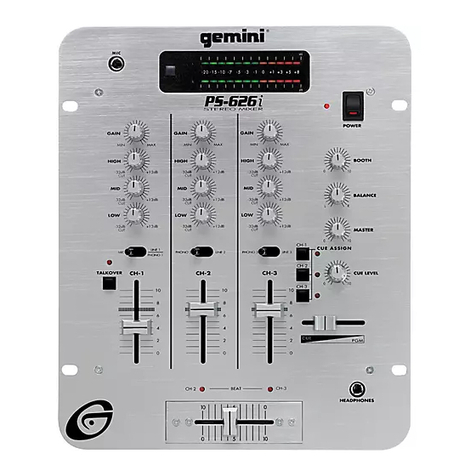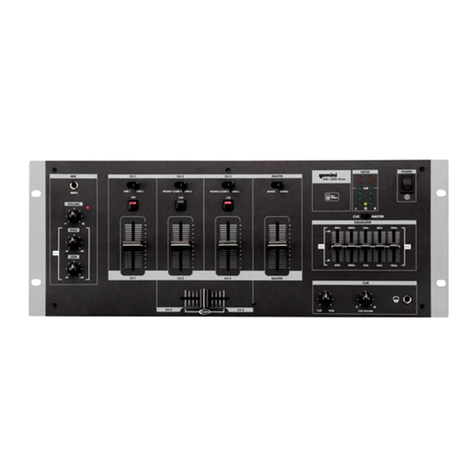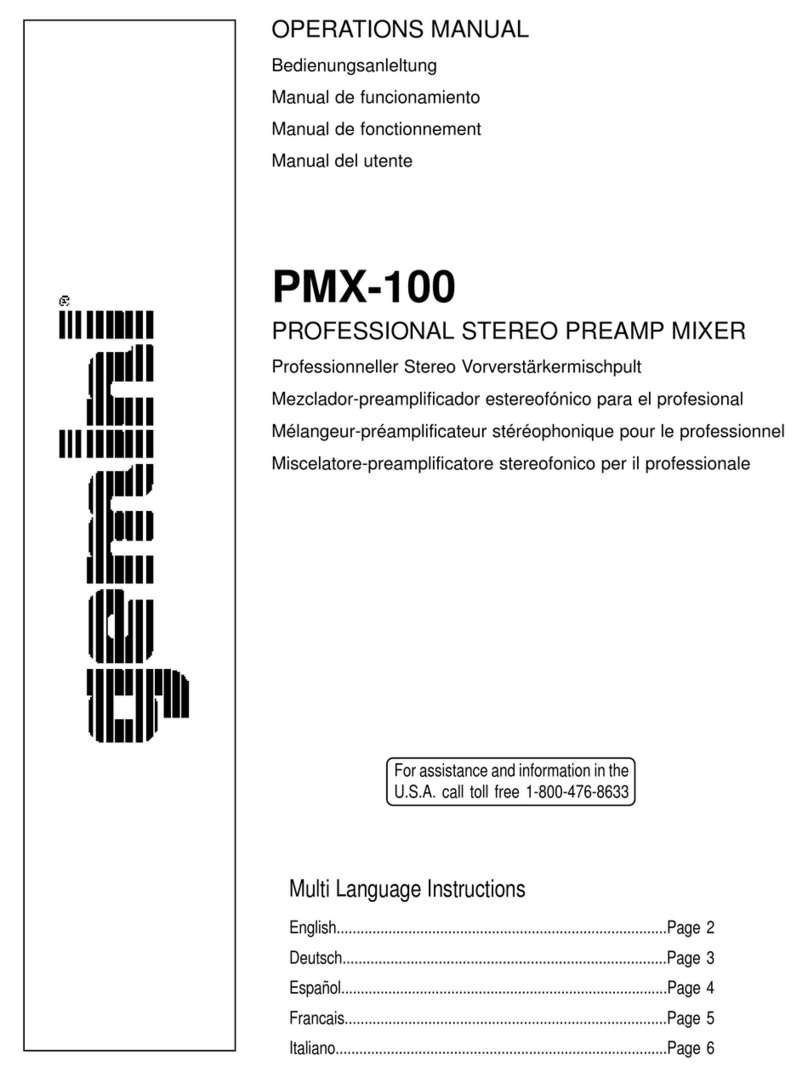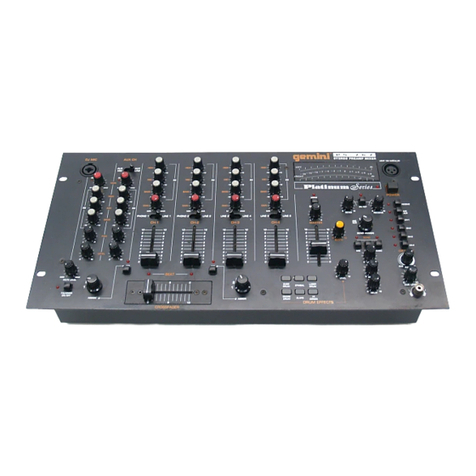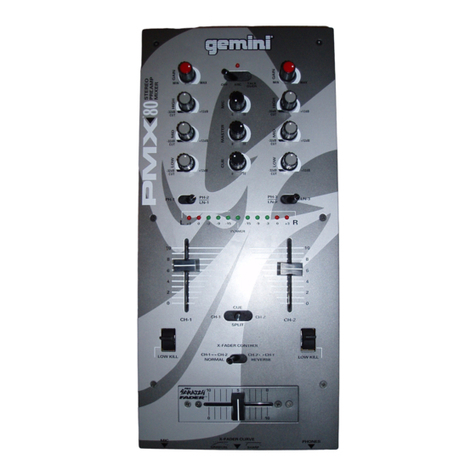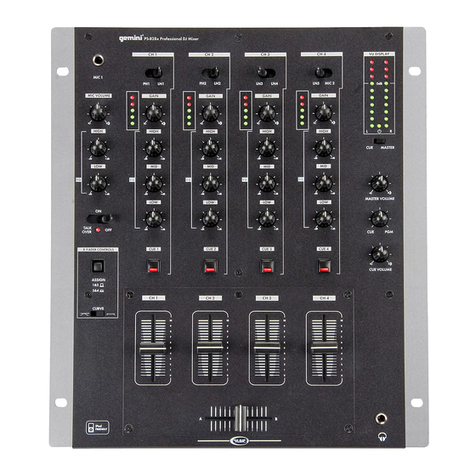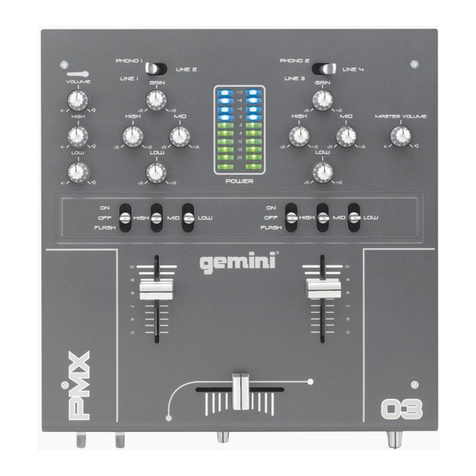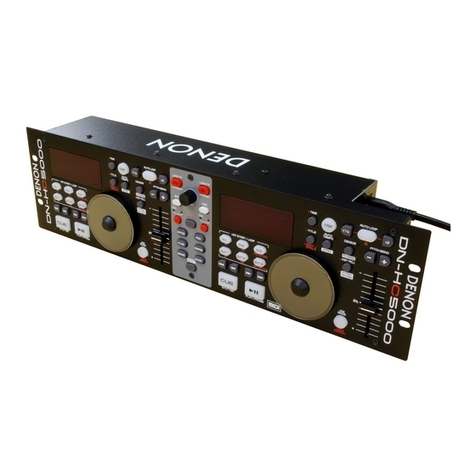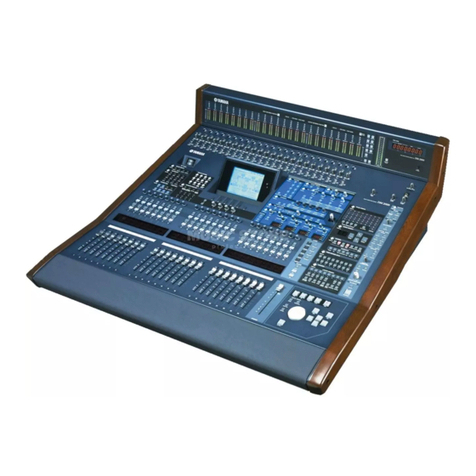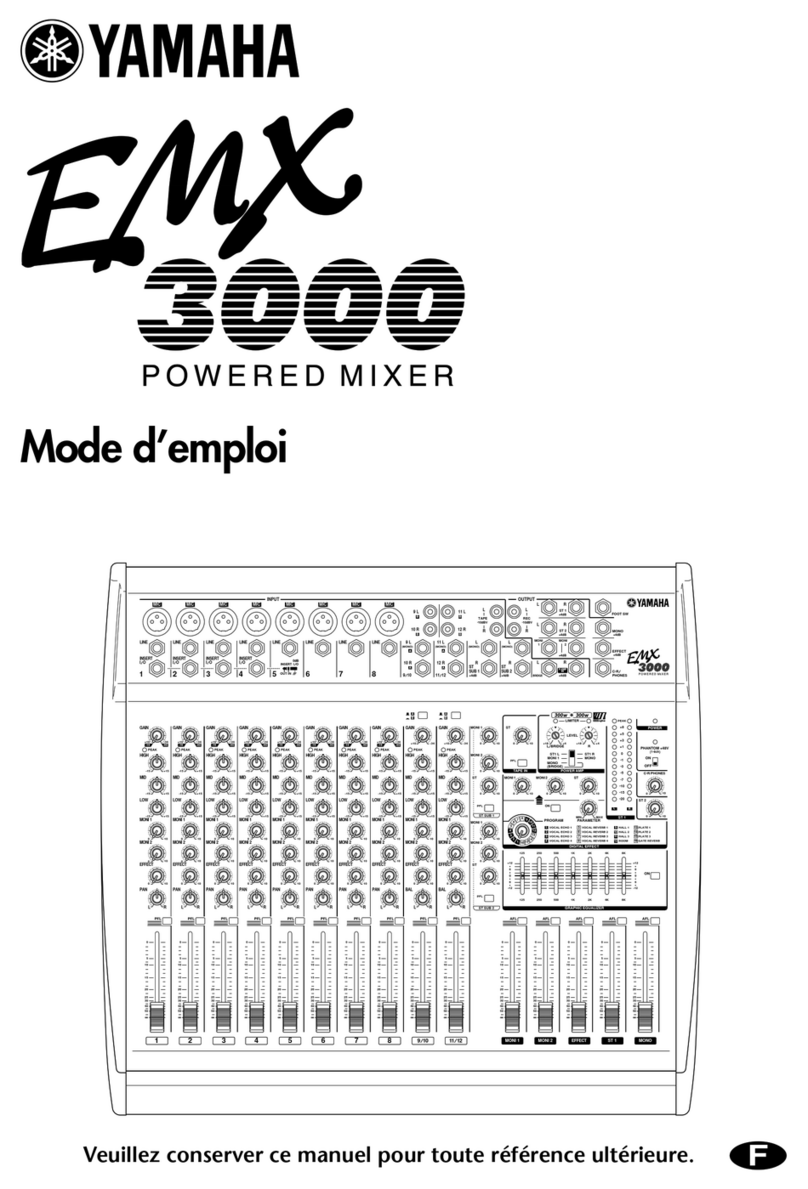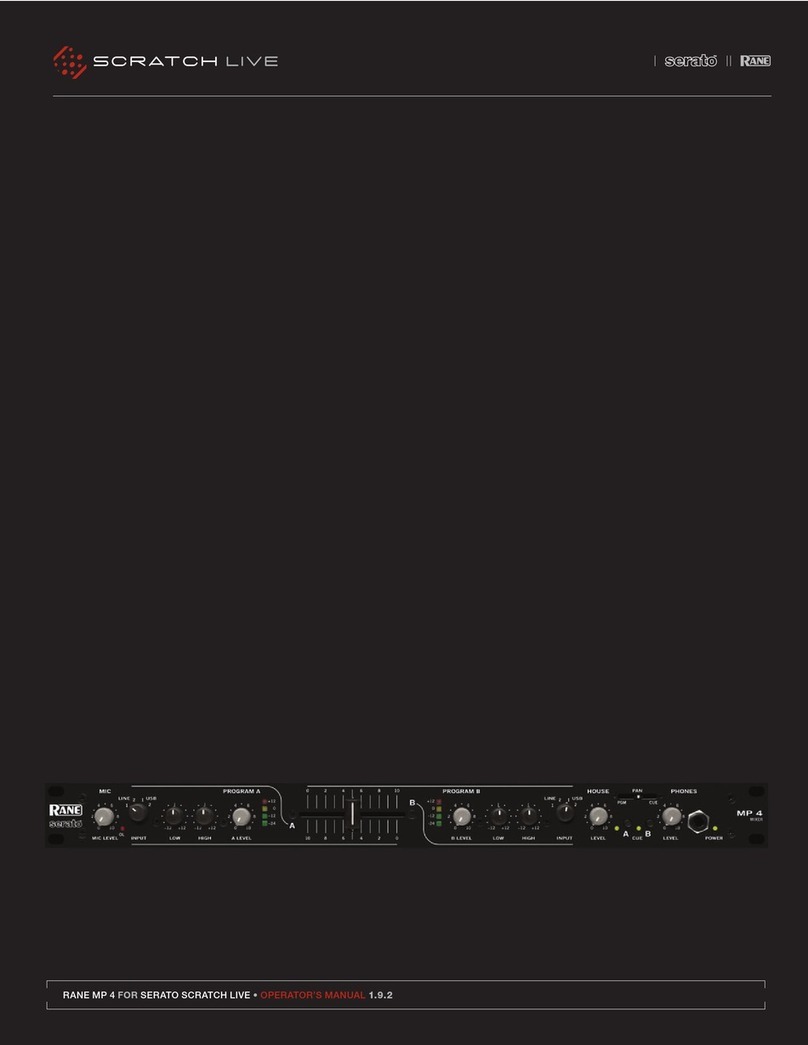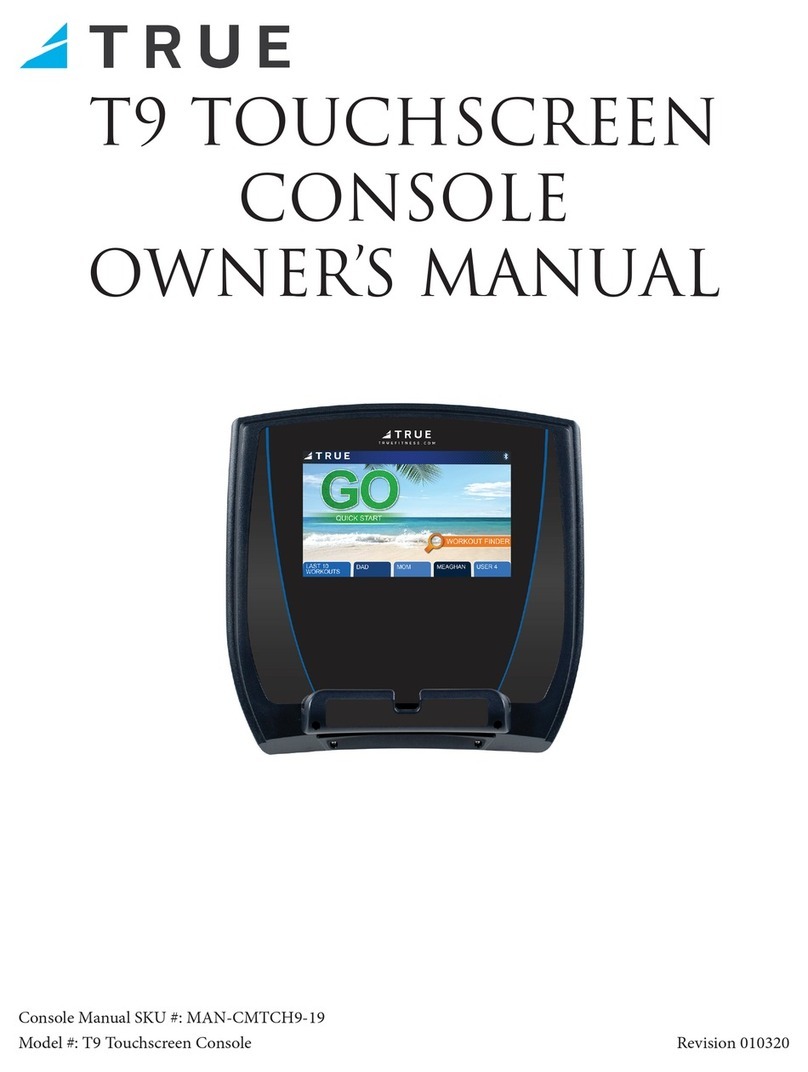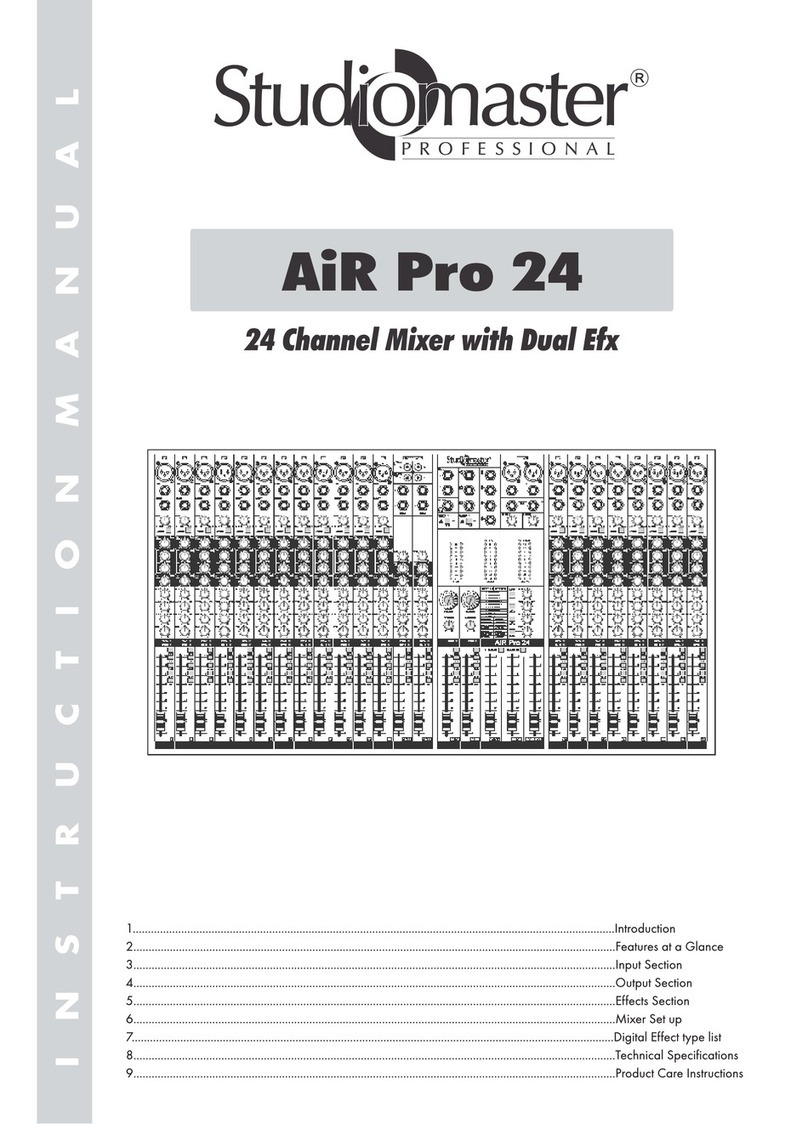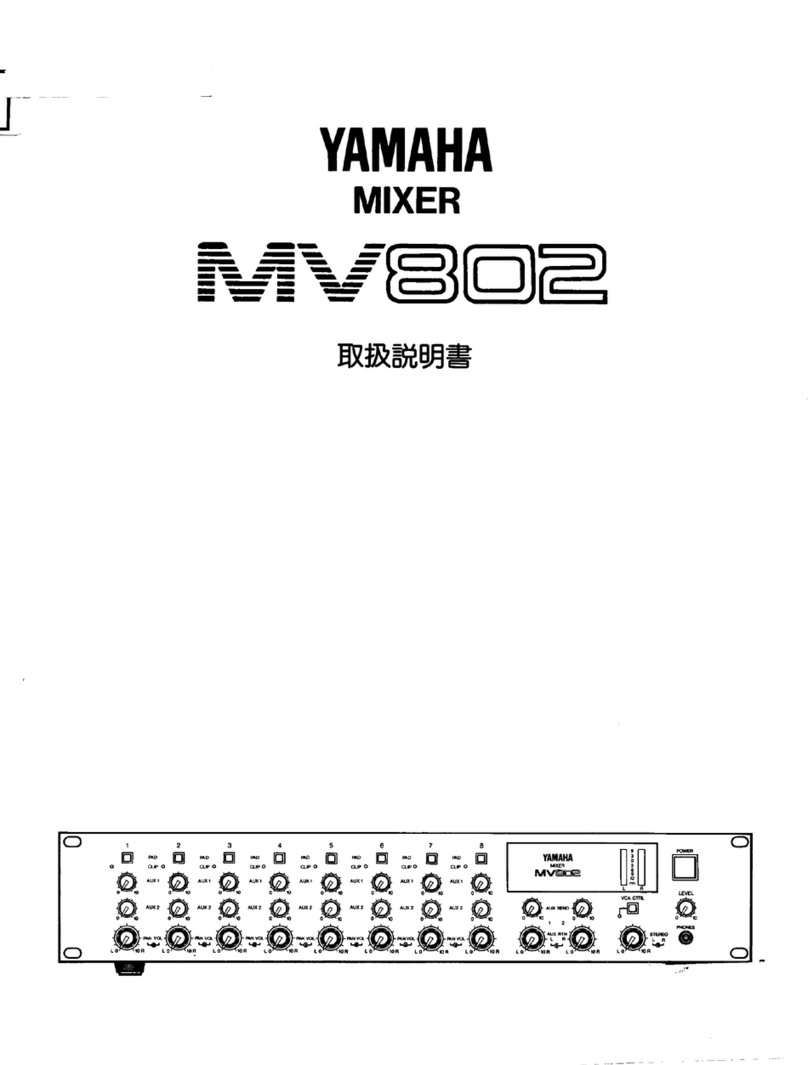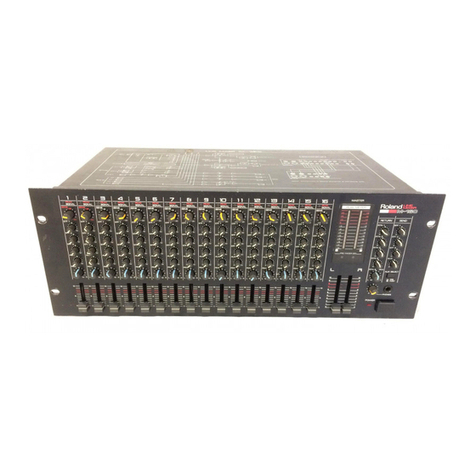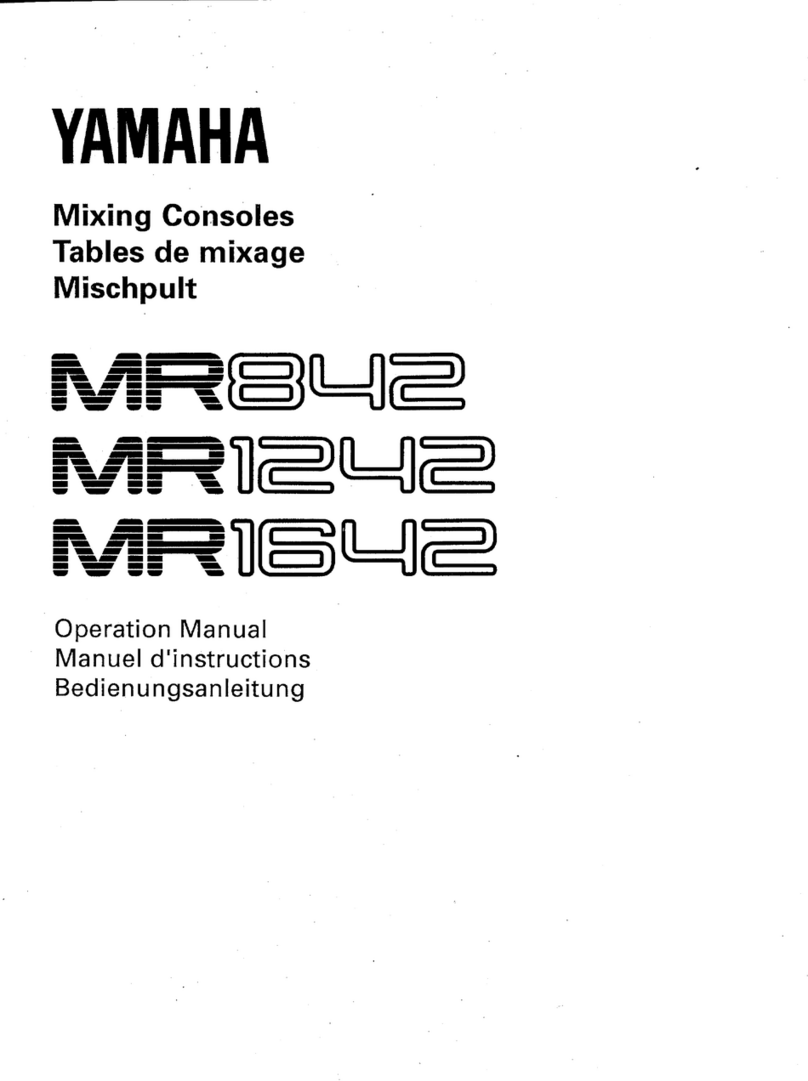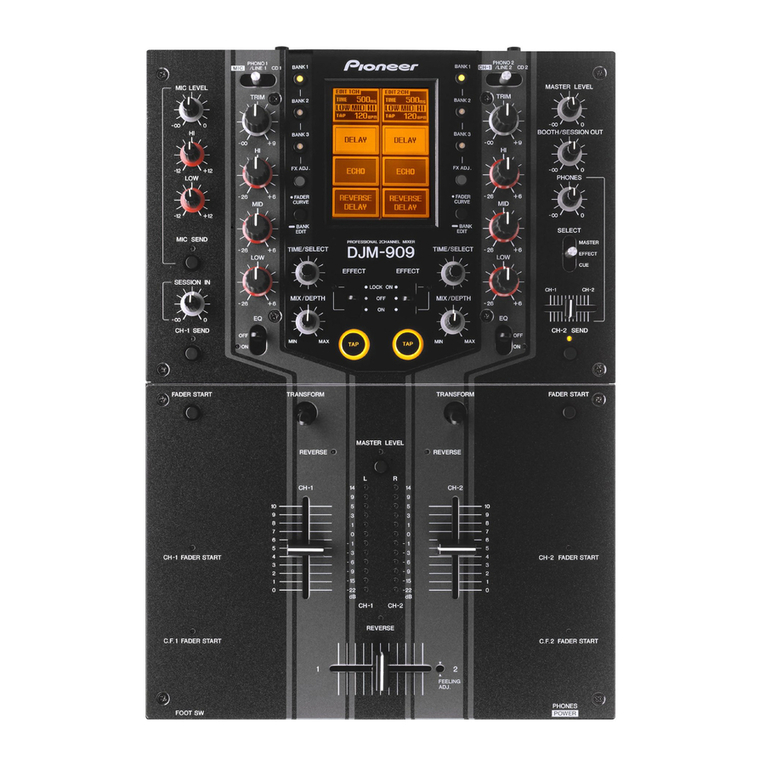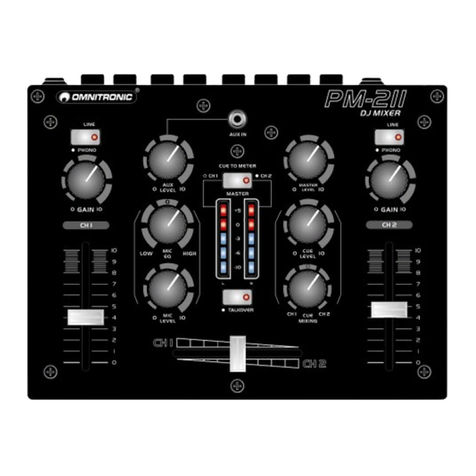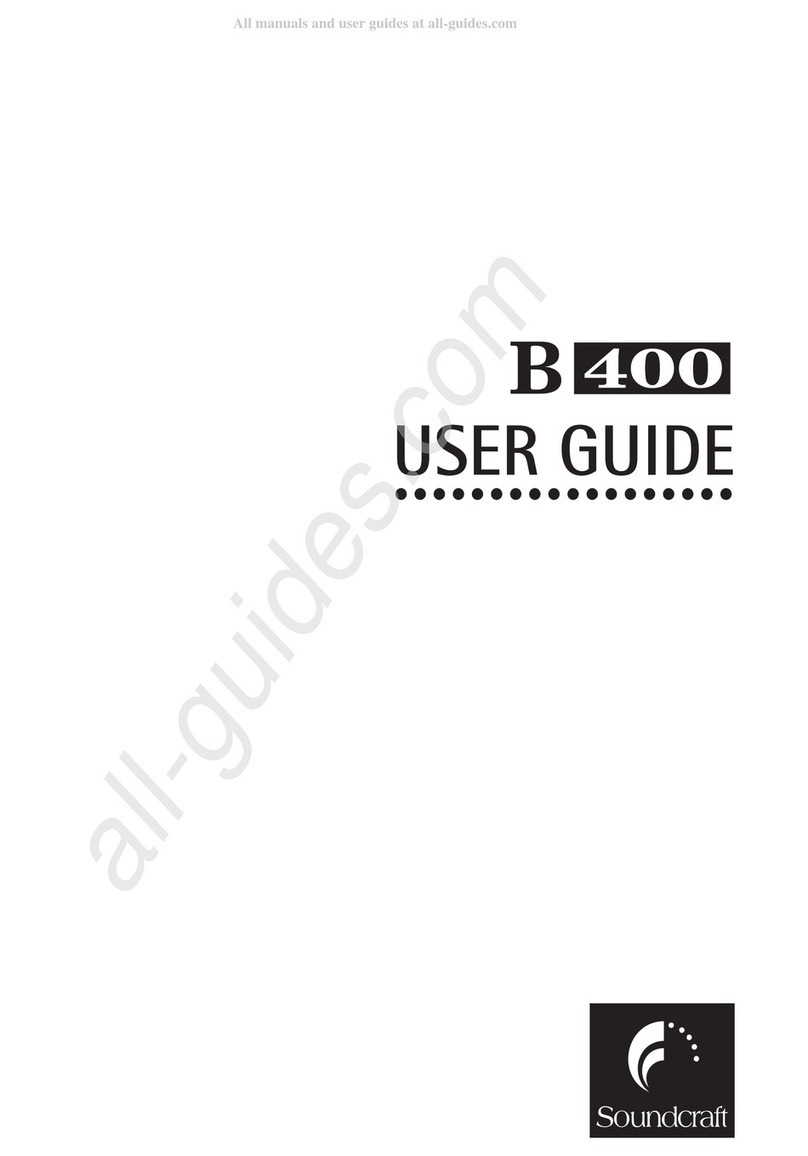Wir gratulieren Ihnen zum Kauf eines Gemini PS-525 PRO Mischpults.
Dieses moderne Mischpult enthält die neuesten Funktionen mit dreijähriger
Garantie,
ausscheließlich
crossfader und Kanalschieber. Vor
Anwendung dieses Mischpults bitte alle Anweisungen sorgfältig
durchlesen.
CUT Funktion (Entfernungsfunktion) der
Bass-,
Mid- und
High-
Frequenzen in Kanälen 1 und 2
2 Stereokanäle
2 konvertierbare Eingänge für
PhonoleitungenILeitung,
Eingänge für 2
Leitungen, Eingang für 1 Mikrophon
Buchse für DJ Mikrophon
(1/4”)
Tief, Mittel, Hoch, Tonstarken- und Balanceregier für jeden Kanal
Punch In für jeden Kanal
Ausgänge für Master, Kabine und Aufnahme
Doppelte Tonartanzeige
Vor Anwendung dieses Geräts bitte alle Anweisungen sorgfältig
durchlesen.
Ias
Gerät nicht öffnen, um das Risiko elektrischen Schocks zu
vermeiden. Es enthält KEINE VOM ANWENDER ERSETZBAREN TEILE.
Die Wartung darf nur von
befahigten
Wartungstechnikern
durchgeführt werden.
Das Gerät von direktem Sonnenlicht oder einer Wärmequelle wie
Heizkörper oder Ofen aussetzen.
Dieses Gerät darf nur mit einem feuchten Tuch gesäubert werden.
Keine Lösungs- oder Reinigungsmittel benutzen.
Bei Umzügen sollte das Gerät in seinem ursprünglichen Versandkarton
und Verpackungsmaterial verpackt werden. Dadurch verhindert man,
daß das Gerät während des Transportes beschädigt wird.
DIESES GERÄT NICHT REGEN ODER FEUCHTIGKEIT AUSSETZEN.
ANDEN REGLERNODER SCHALTERNKEIN SPRAY-
REINIGUNGSMITTEL ODER SCHMIERMITTEL BENUTZEN.
1. Bevor Sie das Stromkabel anschließen, darauf achten, daß der
VOLTAGE SELECTOR (27) (Spannungswähler) auf die richtige
Spannung einstellt ist.
HINWEIS:
Dieses
Produkt
ist
doppelisoliert
und
darf
nicht
geerdet
werden.
’
-.
Darauf achten, daß der Spannungsschalter POWER (21) in
Off-
Position geschaltet ist.
3.
Der PS-525 PRO verfügt über 3 Ausgangsbuchsenpaare. Die Buchsen
MASTER OUTPUT (28) sind unkompensiert und dienen zum Anschluß
an den Hauptverstärker. Die Buchsen OUTPUT REC (30) können dazu
dienen, das Mischpult an den Aufnahmeeingang des
Aufnahmegerätes
anzuschlieaen,
um die Tonmischung aufnehmen zu
können. Die Buchsen OUTPUT BOOTH (30) ermöglichen Anschluß an
einen zusätzlichen Verstärker.
Der Eingang DJ
MIC
(1)
(an der Vorderseite) nimmt Anschlüsse mit
Durchmesser von
0,38
mm
(1/4”),
und balancierte und unbalancierte
Mikrophone auf.
An der Rückwand sind jeweils 2 Stereoeingänge
PHONOILINE
(33,
35)
2 Stereoeingänge LINE (32, 34) angebracht. Die Schalter
PHONOI
LINE (36, 37) ermöglichen Ihnen, die Eingänge (33, 35) an Phono oder
Line anzuschließen. Die Phono-Eingänge werden nur Plattenspieler mit
einem magnetischem Tonabnehmer aufnehmen. Eine Erdungschraube
GROUND (38) zur Erdung des Plattenspielers ist an der Rückwand
angebracht. Die Stereo-Leitungseingängen nehmen Geräte wie
CD-
oder Kassettenspieler auf.
Kopfhörer können an der an der Vorderwand montierten
Kopfhörer-
Buchse HEADPHONE (22) eingesteckt werden.
1.
Wenn das Mischpult eingeschaltet ist, das System im Ruhemodus
(ohne Signal) bei angelegter Masse abhorchen (der
Masse-
Trennschalter (31) ist nach links geschaltet).
2.
Dann den Leistungsschalter ausschalten bevor der
Masse-
Trennschalter (31) betätigt wird. Den Masse-Trennschalter nach
rechts legen, die Leistung wieder einschalten und horchen, um zu
bestimmen, welche Position ein Signal ohne Grundgeräusch und
Brummen erzeugt. Den Masse-Trennschalter in Masseposition halten,
falls der Geräuschpegel in beiden Position
unverandert
bleibt.
Abhängig von Ihrer Systemkonfiguration, wenn man hin und wieder
Masse anlegt, kann man damit einen ruhigeren Signalpfad schaffen.
Wenn man hin und wieder die Masse trennt, kann man dadurch
Massekreise und Brummen eliminieren, um einen ruhigeren Signalpfad
schaffen.
VORSICHT: DIE MASSE IN KEINERWEISE AM MISCHPULTABSCHLIESSEN.
DER ENDABSCHLUSS DER MASSE KANN MIT GEFAHREN VERBUNDEN
SEIN.
STROM EIN: Nachdem Sie das Gerät am Mischpult angeschlossen
haben, drücken Sie auf die Taste POWER (21).
KANAL 1: Die Regelelemente GAIN
(8),
HIGH
(9),
MID
(IO)
und LOW
(11) ermöglichen ein vollkommenes Regulieren der ausgewählten
Tonquelle. Schalter
#
(12) ermöglicht, den Eingang von PHON0
l/LINE
1 (35) oder LINE 2 (34) auszuwählen. CHANNEL SLIDE (13) regelt
den Ausgangstonsignal dieses Kanals.
KANAL 2: Die Regelelemente GAIN
(8),
HIGH
(9),
MID (10) und LOW
(11) ermöglichen ein vollkommenes Regulieren der
ausgewahlten
Tonquelle. Schalter
#
(19) ermöglicht, den Eingang von
PHON0
2/LINE
3 (33) oder LINE 4 (32) auszuwählen. CHANNEL SLIDE (20) regelt
den Ausgangstonsignal dieses Kanals.
HINWEIS:
Für
jeden
Kanal
gibt
es
niedrige
(Low),
mittlere
(Mid)
und
hohe
(High)
Entzerrung
mit
einem
äu
erst
breiten
Regulierbereich,
welches
eine
gleichförmigere
Mischung
bietet.
RATSCHLAG: Sie können die CUT Funktion eine jeden Kanals
benutzen, um Low, Mid
undloder
High zu entfernen um dadurch
Spezialeffekte zu
erziehlen.
4.
ÜBERBLENDER: Der Überblender CROSSFADER (18)
ermöglichtdas
Mischen von Tonquellen. Links des CROSSFADER (18) ist KANAL 1
und die rechte ist KANAL 2. Der CROSSFADER REVERSE SWITCH
(17) ermöglicht den Rückwärtsgang des Crossfaders Kanal 2 wird
nun kontrolliert durch die linke Seite des Crossfader und Kanal 1 durch
die rechte Seite.
Page5
